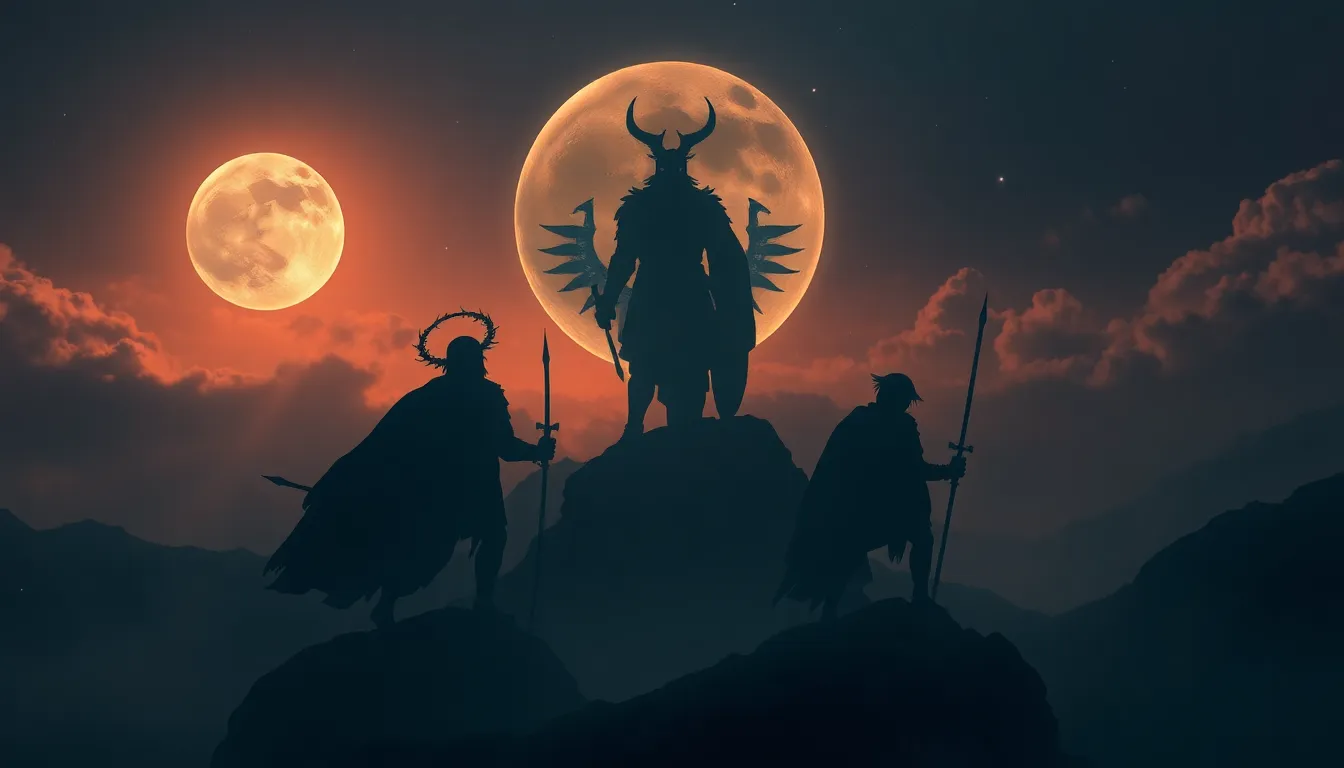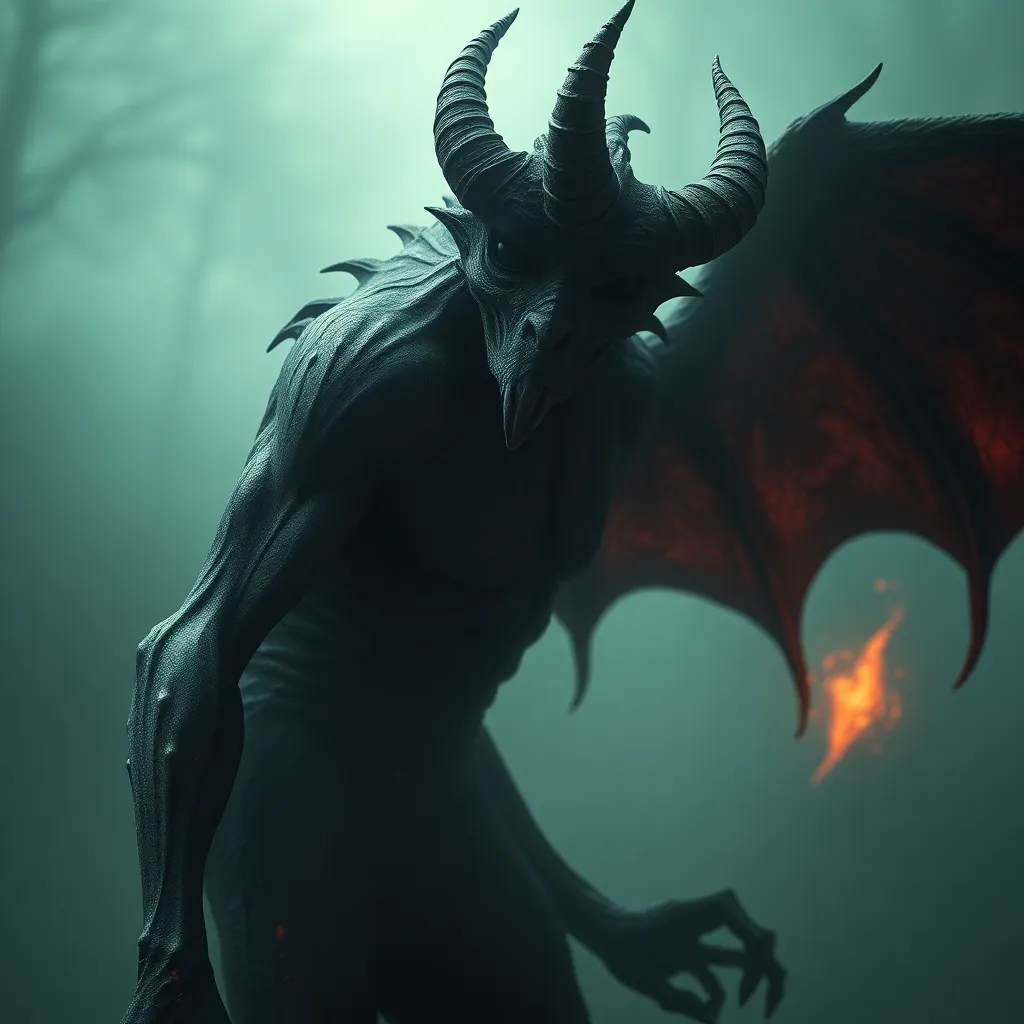Guardians of the Night: Exploring the Mythology of the Moon
I. Introduction
The Moon has long captivated the human imagination, serving as a beacon in the night sky and a source of inspiration across various cultures throughout history. Its enchanting glow has not only guided travelers but has also influenced countless myths and legends. In different civilizations, the Moon has been seen as a guardian of the night, a powerful symbol representing various aspects of life, nature, and the cosmos. This article aims to explore the rich tapestry of mythology surrounding the Moon, delving into its significance, deities, and the symbolism it embodies.
II. The Moon in Ancient Civilizations
A. The Moon in Mesopotamian Mythology
In ancient Mesopotamia, the Moon played a crucial role in their mythology and religious practices. The lunar deities were revered as powerful beings that influenced the cycles of life.
- Inanna and the Sumerian Lunar Traditions: Inanna, also known as Ishtar, was the Sumerian goddess of love and war, often associated with the Moon. Her journey through the underworld and her subsequent resurrection symbolize the Moon’s phases and the cyclical nature of life.
- Sin, the Moon God of the Akkadians: Sin was the chief lunar deity, representing time and wisdom. He was believed to guide people through the darkness, ensuring their safety and prosperity.
B. The Moon in Egyptian Mythology
In ancient Egypt, the Moon was intricately linked to various deities and was considered a vital force in the cosmos.
- Thoth and His Connection to Wisdom and the Lunar Cycle: Thoth, the god of writing and knowledge, was often depicted with a lunar crescent. He was thought to govern the calendar, marking the passage of time and the phases of the Moon.
- Khonsu, the Youthful Moon Deity: Khonsu was revered as a protector and healer, embodying the youthful and dynamic aspects of the Moon. His festivals celebrated the cycle of renewal and restoration.
III. Lunar Deities Across Cultures
A. The Greek and Roman Lunar Gods
The influence of the Moon extended into Greek and Roman mythology, where it was personified by various deities.
- Selene and Her Roman Counterpart Luna: Selene, the Greek goddess of the Moon, was often depicted driving a chariot across the night sky. Her Roman equivalent, Luna, shared similar attributes and was associated with the cycles of life and the natural world.
- The Role of the Moon in Myths of Transformation: Both Selene and Luna were central figures in myths that involved transformation and rebirth, signifying the Moon’s ability to influence change.
B. The Moon in Asian Mythology
Asian cultures also have rich lunar traditions, with unique stories and deities associated with the Moon.
- Chang’e and the Moon Festival in Chinese Culture: Chang’e is a beloved Chinese goddess who resides on the Moon. The Mid-Autumn Festival celebrates her and the harvest, symbolizing unity and family reunion.
- Tsukuyomi in Japanese Mythology: Tsukuyomi, the Moon god, represents the night and is often associated with darkness and the balance of light and shadow in the universe.
IV. The Symbolism of the Moon
A. The Moon as a Symbol of Femininity and Fertility
The Moon has long been associated with femininity, often linked to the cycles of women and fertility. In many cultures, the lunar cycles mirror the menstrual cycle, symbolizing fertility, childbirth, and the nurturing aspect of femininity.
B. The Moon’s Representation of Time and Cycles in Nature
The Moon’s phases have been used to mark the passage of time, with many cultures creating calendars based on its cycles. This natural rhythm reflects the cycles of life, death, and rebirth found in nature, emphasizing the interconnectedness of all living things.
V. Folklore and Legends Surrounding the Moon
A. Folkloric Tales of Lunar Guardians and Protectors
Many cultures have stories of lunar guardians, beings that watch over the night and protect humanity from darkness. These tales often reflect the Moon’s role as a symbol of safety and guidance.
B. The Moon’s Role in Mythological Stories of Creation and Destruction
The Moon has been featured in creation myths across various cultures, representing the balance between light and darkness. In some traditions, the Moon’s phases signify cycles of destruction and renewal, playing a crucial role in the ongoing narrative of existence.
VI. The Moon’s Influence on Human Culture
A. The Moon in Art, Literature, and Music
The Moon has inspired countless works of art, literature, and music throughout history. Its ethereal beauty and mysterious presence have made it a central theme in various creative expressions, from poetry to visual arts.
B. Celebrations and Festivals Centered Around the Moon
Many cultures celebrate the Moon through festivals, rituals, and gatherings. These events often focus on gratitude for the harvest, the changing seasons, and the lunar cycles.
VII. Modern Interpretations of Lunar Mythology
A. The Resurgence of Interest in Lunar Mythology in Contemporary Spirituality
In recent years, there has been a resurgence of interest in lunar mythology, particularly in contemporary spiritual practices. Many people are drawn to the Moon’s symbolism as a source of guidance and inspiration in their personal journeys.
B. The Moon’s Impact on Modern Astrology and Personal Beliefs
The Moon continues to play a significant role in modern astrology, influencing personal beliefs and practices. Its phases are often tied to emotional states and decision-making, guiding individuals in their daily lives.
VIII. Conclusion
The Moon’s enduring legacy in mythology reflects the deep connection between humanity and the cosmos. As a symbol of femininity, time, and transformation, it has inspired countless stories and beliefs throughout history. Understanding these myths is essential for appreciating cultural heritage and the human experience, reminding us of our place in the universe and the timeless dance between light and darkness.




